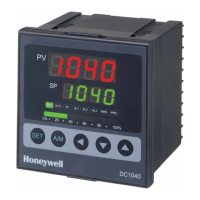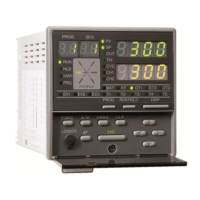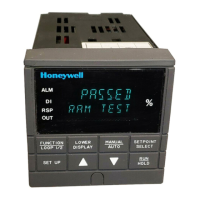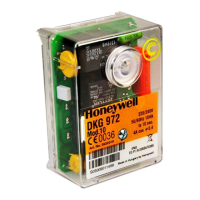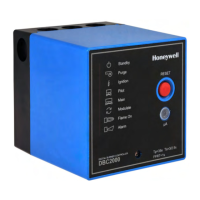Section 1 - Ventilation
7 Honeywell Economizers 63-8594-02
Ventilation Requirements
Ventilation is defined as the process of
bringing outside air into a building. The four
major reasons for ventilation are:
1. To ensure a healthy atmosphere for the
occupants. Ventilation is used to dilute
indoor contaminants and provide fresh air
for breathing.
2. To pressurize the building. Positive
pressure inside a building prevents
infiltration of unconditioned and unfiltered
outside air through openings.
3. To provide atmospheric cooling. Bringing
in cool outside air is more energy efficient
and less costly than using mechanical
cooling equipment.
4. To replace air that is being exhausted.
The term for this is make-up air.
Whenever air is exhausted, replacement
air must be provided.
The air controls in the mixing section of a
HVAC unit are used to maintain a minimum
ventilation volume at all times. This is in
addition to controlling the dampers for
atmospheric cooling.
Determining the amount of ventilation required
for a space is probably one of the hardest
tasks an engineer faces in the design of the
ventilation system. Section 6 of ASHRAE 62.1
offers two procedures designers can use to
determine ventilation rates, the Ventilation
Rate Procedure (VRP) and the Indoor Air
Quality Procedure (IAQP).
The VRP method is based on typical spaces
and usage, the rates are intended to dilute and
exhaust bioeffluents from occupants and
building contaminants to satisfy the 80% of the
occupants of the space. There are two
sources of contaminants in a space that
ventilation is intended to reduce: Occupants
and their activities (e.g., use of office
equipment) and Off-gassing from building
materials. The ventilation rate in the breathing
zone (V
bz
) required for both people related
sources (V
p
) and building related sources (V
a
)
is:
V
bz
= V
p
+ V
a
V
p
and V
a
both have two components; V
p
is
the number of people in the space (P
z
) times
the occupant comfort factor R
p
(minimum
ventilation rate determined by extensive
studies for occupant comfort based on activity
level in the space) and V
a
is the area of the
space (A
z
) times the building component
factor R
a
(minimum ventilation rate
determined by extensive studies for occupant
comfort based on type of space). Therefore
ventilation required in the breathing zone
becomes:
V
bz
= R
p
P
z
+ R
a
A
z
R
p
and R
a
values are found in ASHRAE 62.1
User’s manual (Table 6-A) and ASHRAE 62.1
Standard.
The outdoor air or recirculated air may be
cleaned using a filter or air cleaner but the
outdoor air ventilation rates cannot be reduced
below the rate determined by the above
formula.
M23621A
MIXED AIR SECTION
O.A.
FILTERS
EX.
AIR
DAMPER
DAMPER
DAMPER
